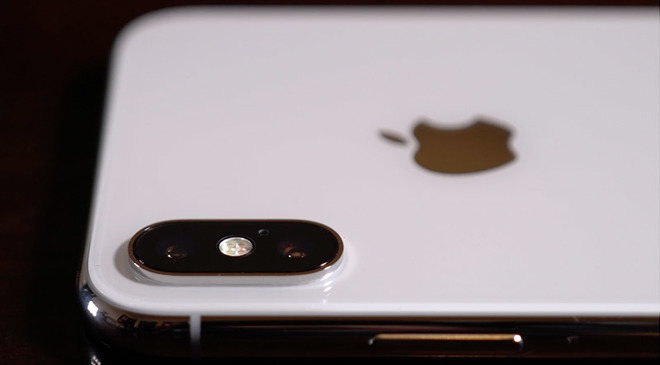In a bid to catch up with Apple's TrueDepth 3D-sensing camera, Android device makers are looking to incorporate similar components using time-of-flight technology, according to KGI analyst Ming-Chi Kuo, though the first models are not expected to arrive until 2019.
In a note to investors seen by AppleInsider, Kuo predicts Chinese manufacturer Huawei will introduce smartphone models with 3D-sensing capabilities in 2019.
The company will start off with structured light solutions like those found in Apple's TrueDepth camera system for iPhone X, but will move to cheaper, smaller time-of-flight sensors by the second or third quarter of next year, Kuo says. Models with TOF sensor could replace those with structured light technology within three to six months after a start to mass production.
Other Android device makers could follow Huawei's lead and build out their own facial recognition camera systems using ToF technology.
"With advantages in BOM, we see ToF becoming the Android camp's mainstream facial recognition solution, as long as production yield and recognition quality don't become major issues," Kuo writes.
Apple became the first major smartphone maker to leverage depth-sensing camera technology with the release of iPhone X last year. Dubbed TrueDepth, Apple's specialized camera system integrates a dot projector, flood illuminator, infrared and color cameras, and advanced learning algorithms to power a facial recognition solution called Face ID.
To accurately map a user's face, TrueDepth projects an array of 30,000 dots in a known pattern using a vertical-cavity surface-emitting laser (VCSEL) module operating in the infrared spectrum. The resulting image, specifically deviations in the pattern, is captured by an infrared camera, combined with 2D image information and compared against secure reference data.
Rather than capturing an image of a patterned light, ToF solutions generate depth maps by calculating the time it takes laser pulses, or alternatively modulated laser light, to bounce off an object's surface.
Despite having a lead in terms of progress toward mass production, Kuo believes structured light technology might become a "transitional solution" amidst a wider industry push into ToF systems. Whether Apple will also turn to ToF in a future iteration of TrueDepth is unknown, though rumors last year suggest the company is investigating integration of the technology in a rear-facing 3D sensor for iPhone that could debut in 2019.
Kuo's predictions come on the heels of a report that estimated Apple to have a two-year head start over the Android camp in what is becoming a 3D sensing arms race. Suppliers of VCSEL modules and optical filters said they are unlikely to reach production levels adequate for wide adoption until 2019.
Apple, on the other hand, gobbled up parts supply for iPhone X and inked an exclusive deal with key manufacturer Finisar in 2017, promising a substantial leg up on the competition.
Even if companies like Huawei shift from structured light to ToF, supply will continue to be constrained as the two technologies share a number of components including hard to get VCSEL arrays.
 Mikey Campbell
Mikey Campbell




-xl-m.jpg)


-m.jpg)






 Chip Loder
Chip Loder
 Thomas Sibilly
Thomas Sibilly
 Wesley Hilliard
Wesley Hilliard
 Christine McKee
Christine McKee
 Amber Neely
Amber Neely
 William Gallagher
William Gallagher
 Malcolm Owen
Malcolm Owen








39 Comments
It looks like the FaceID technology is almost as huge as the move to 64-bit. Apple catches all rivals off-guard again.
6+ years after the passing of Jobs, Apple still skates to where the puck will be!
"
Just one minor quibble. That would be better as 3D depth-sensing as depth sensing camera technology has been used on phones for a while.
As I said in another thread recently, Huawei has already detailed and demoed its system. The last time I looked it had more VCSEL business than Apple and as a result I can't see them having supply problems, especially as they wouldn't roll the systems out across the board.
As for release timeframe, most rumours pointed to a release next week but as leaks have increased over the weeks, and high definition images of the new phones have appeared, it seemed unlikely that it would be included in next week's announcement. Then just yesterday, an article (I think it was Digitimes) pointed to them using the second generation Spectra ISP on the new phones.
This area is probably the last hardware related mystery of the P20 series.